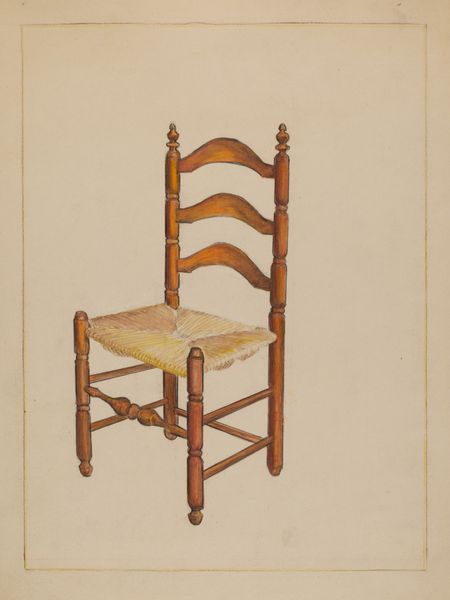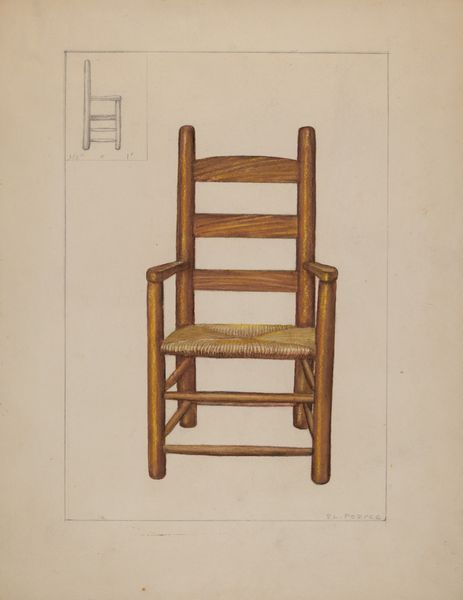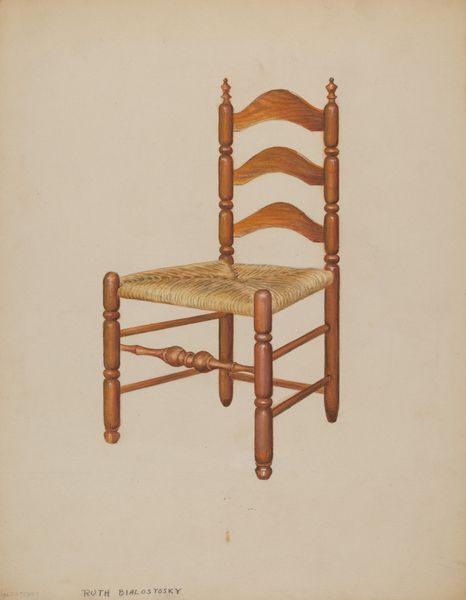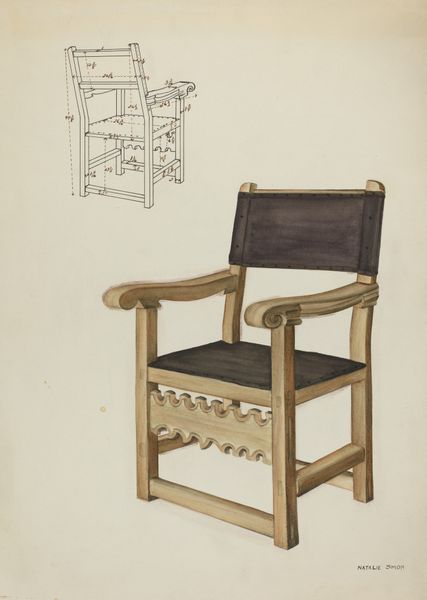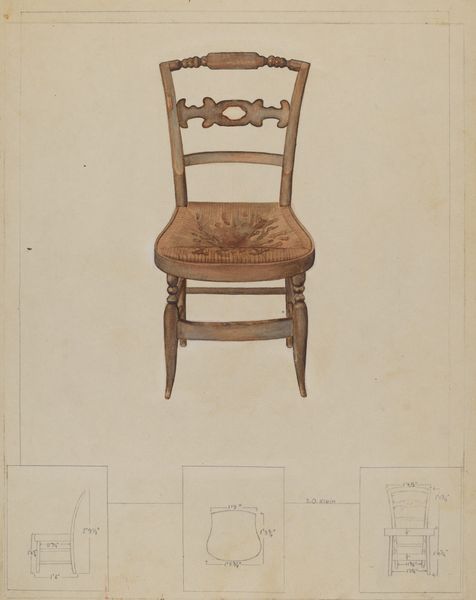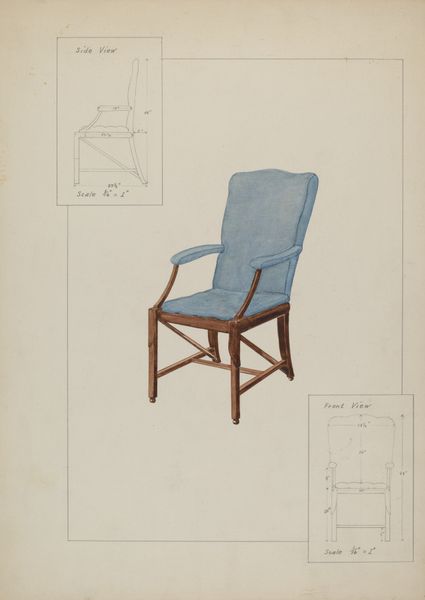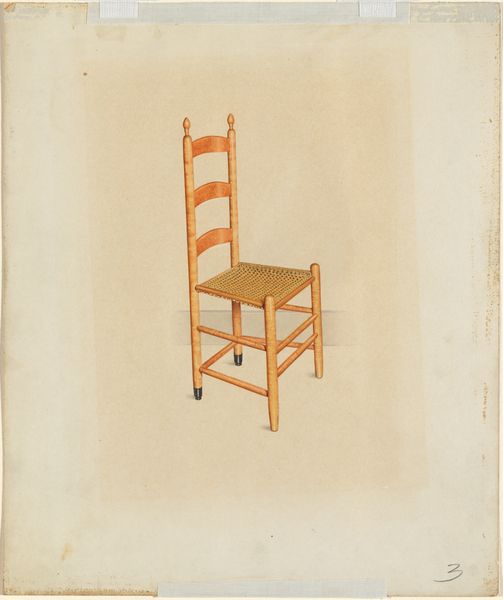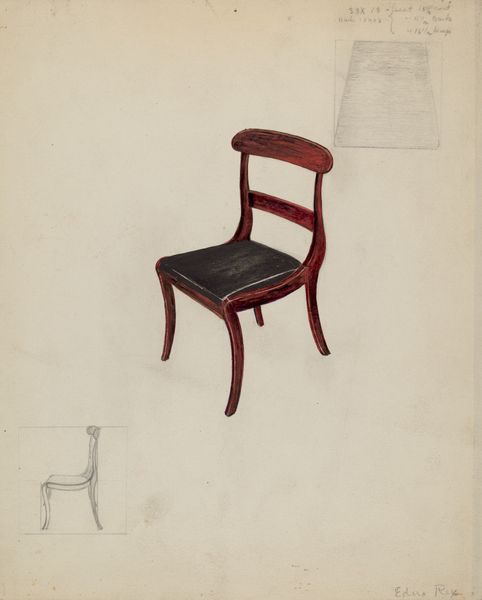
drawing, paper, pencil
#
drawing
#
paper
#
pencil
#
academic-art
Dimensions: overall: 27.9 x 22.7 cm (11 x 8 15/16 in.) Original IAD Object: none given
Copyright: National Gallery of Art: CC0 1.0
Curator: Immediately, I notice the clean, precise lines. There's a real clarity of form here that draws me in. Editor: Indeed. What we have here is a drawing titled "Ladderback Chair" dating from around 1937 by Alfred Walbeck. It's rendered in pencil on paper, employing a studied academic style. What can you tell us about its historical context? Curator: Well, consider the period. It was drawn in the late 1930s. We must acknowledge the influence of functionalism—a design ethic deeply intertwined with social ideals and material realities of the Great Depression. Editor: Absolutely. There's a deliberate simplicity, an economy of design here that seems reflective of the austerity of that era. Notice the rhythmic interplay of verticals and horizontals, the repeated curves of the ladderback itself. The textures in the woven seat, subtly suggested by the artist, add a layer of tactile interest that contrasts nicely with the rigidity of the frame. Curator: The drawing has some notations. That suggests the chair might have been a design being put forth for consideration in some context or other. During the New Deal, for example, furniture design played a role in providing jobs and fostering American craftsmanship, often drawing inspiration from Shaker or vernacular traditions. The Ladderback, and Walbeck’s work as well, becomes another aspect of this dynamic time in American history. Editor: It’s curious, though, isn’t it, that a piece rooted in functionalism is represented here in such an overtly academic style, with almost an attention to ideal form and line. The detailed rendering emphasizes the chair's essence as an object of utility. It invites us to examine it not only as a functional item but also as an artistic object. Curator: That intersection of art and utility seems particularly resonant when considering the context. There were artists employed at different levels to give objects elevated forms of beauty that common citizens could have access to and in turn appreciate. The scale renderings further evidence the artist's interest in practicality, with different perspectives offering a complete picture. Editor: You know, after taking it all in, there is something very grounded in this piece that wasn't as evident upon my first look. Thanks to a broader view, this "Ladderback Chair" isn't merely an object, but rather it mirrors the ideals and challenges of an important time. Curator: I wholeheartedly agree. It goes beyond a chair; it encapsulates form, function, and the collective mindset.
Comments
No comments
Be the first to comment and join the conversation on the ultimate creative platform.
